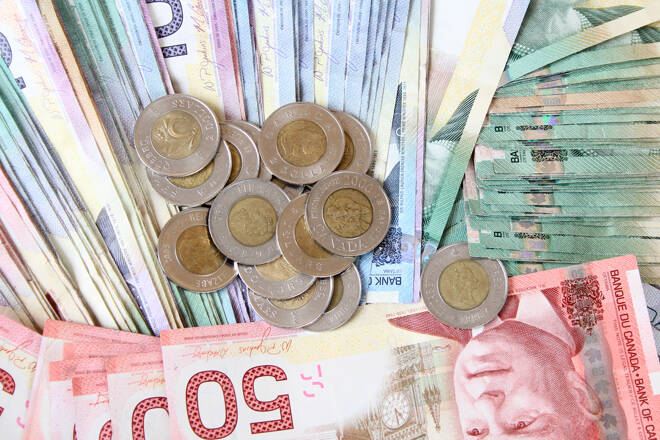Advertisement
Advertisement
USD/CAD: Loonie Turns Range Bound as Omicron Worries Ease; Could Turn Volatile
By:
“The 3 Commodity units (AUD, NZD and CAD) now appear vulnerable on 2 fronts – (1) as risk currencies trading in a risk-off environment created by the new Covid strain; and (2) the 3 units having one of the more aggressive central bank rate hike profiles discounted by markets. Against USD though, the 3 units could find better support (as USD is probably even more vulnerable to the removal of the more aggressive Fed rates pricing),” noted analysts at Citi.
The Canadian dollar largely remained range-bound against its U.S. counterpart on Monday after fears receded about the new coronavirus variant Omicron mutation as governments across the globe sought information about its impact.
“The 3 Commodity units (AUD, NZD and CAD) now appear vulnerable on 2 fronts – (1) as risk currencies trading in a risk-off environment created by the new Covid strain; and (2) the 3 units having one of the more aggressive central bank rate hike profiles discounted by markets. Against USD though, the 3 units could find better support (as USD is probably even more vulnerable to the removal of the more aggressive Fed rates pricing),” noted analysts at Citi.
Today, the USD/CAD pair traded in a wide range of 1.2716-1.2793. The Canadian dollar hit its lowest level in over two months on Friday. After gaining about 2.3% last month, the loonie weakened by over 3.2% so far this month.
The dollar index, which measures the value of the dollar against six foreign currencies, was trading 0.32% higher at 96.398 – close to a 16-month high. Last week, minutes of the U.S. Federal Reserve meeting confirmed market expectations that the Fed will raise rates sooner than other major central banks. The greenback rose to 16-month highs against most other major currencies because of the hottest U.S. inflation reading in a generation that pushed investors to bet that interest rates are likely to rise sooner than previously thought.
“After suffering heavy losses on Friday, risk assets start the week on a slightly firmer footing on the (yet unproven) assumption that Omicron may not lead to more severe illness and that vaccines may still prove effective. It will probably take a couple of weeks to better understand this variant and until then risk-sensitive FX probably stays fragile,” noted Francesco Pesole, FX Strategist at ING.
“In terms of the US calendar this week, the highlight will be Friday’s release of the November US jobs report, plus key congressional hearings from FOMC’s Jerome Powell on Tuesday and Wednesday following his nomination for a second term. Expect US data to continue to back the case for an early Fed tightening, but it will probably take some more detailed assessment on the severity of Omicron before DXY can make it back to the highs of the year at 96.94.”
It is highly likely that the world’s dominant reserve currency, the USD, will rise by end of the year, largely due to the expectation of at least one rate hike next year. With the dollar strengthening and a possibility that the Federal Reserve will raise interest rates earlier than expected, the USD/CAD pair may experience a rise.
Canada is the world’s fourth-largest exporter of oil, which edged higher after Omicron fear eased. At the time of writing, U.S. West Texas Intermediate (WTI) crude was trading 4.33% higher at $71.12 a barrel. Higher oil prices lead to higher U.S. dollar earnings for Canadian exporters, resulting in an increased value of the loonie.
About the Author
Vivek Kumarauthor
Vivek has over five years of experience in working for the financial market as a strategist and economist.
Advertisement
